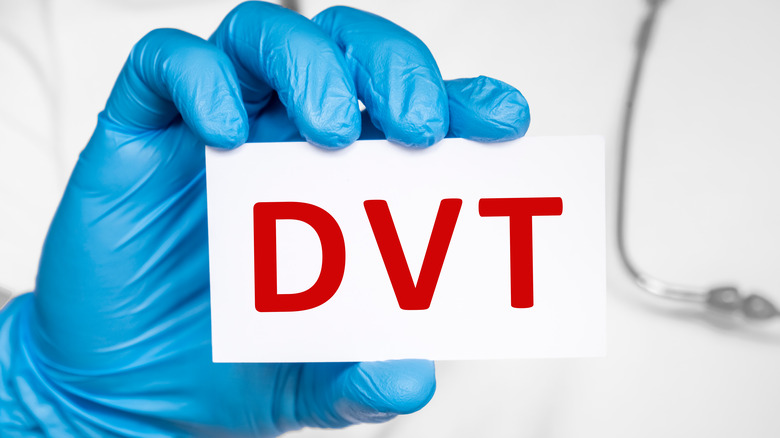If This Happens To Your Legs, It Could Be A Sign Of DVT
Deep vein thrombosis, or DVT, is the result of a blood clot forming in a deep vein somewhere in your body. Generally, these kinds of clots occur in the legs, but you can also have one in your pelvis or arm, per the Centers for Disease Control and Prevention (CDC). Anyone can develop one of DVT, but certain factors — such as an injury to a vein — increase a person's risk. If blood flow is slowed due to being restricted to a bed or sitting for a long time with your legs crossed, a blood clot can also form. Family history, age, obesity, an increase in estrogen, and other factors may also increase your risk of developing DVT.
DVT is serious because part of the blood clot could break free and become lodged in the lung, which is a dangerous condition known as a pulmonary embolism. DVT can also cause chronic venous insufficiency, which can cause your blood to pool in your legs, leading to swelling and skin discoloration (via Cleveland Clinic).
Look for unusual symptoms in the legs
Some people may not ever develop symptoms of DVT. That said, the most common sign of DVT is swelling in the affected leg. With DVT, it is not likely that both legs will swell. Any pain associated with the condition will generally begin in the calf, and it will most likely feel like soreness or cramping. The swollen area may be tender. It could also be red in color and warm to the touch (via Web MD).
Treatment for DVT depends on the severity of the blood clot. In some cases, medications that thin blood may be prescribed. Compression stockings might also be worn to alleviate swelling. More serious cases may require hospital treatment. People with DVT should take time to exercise their legs if they sit for a long time. Standing up and taking a walk is also advised to keep blood flowing, per Cleveland Clinic.


